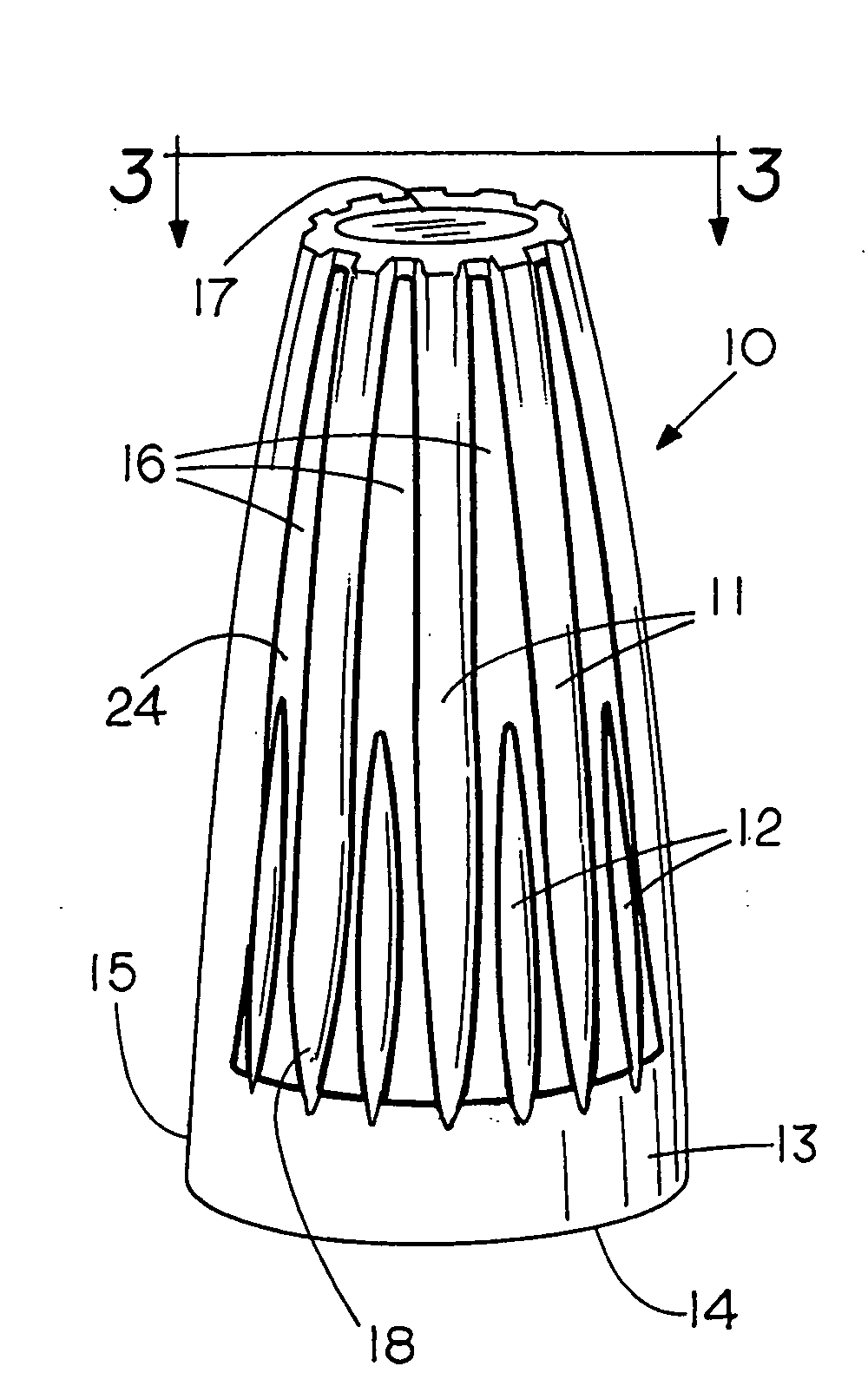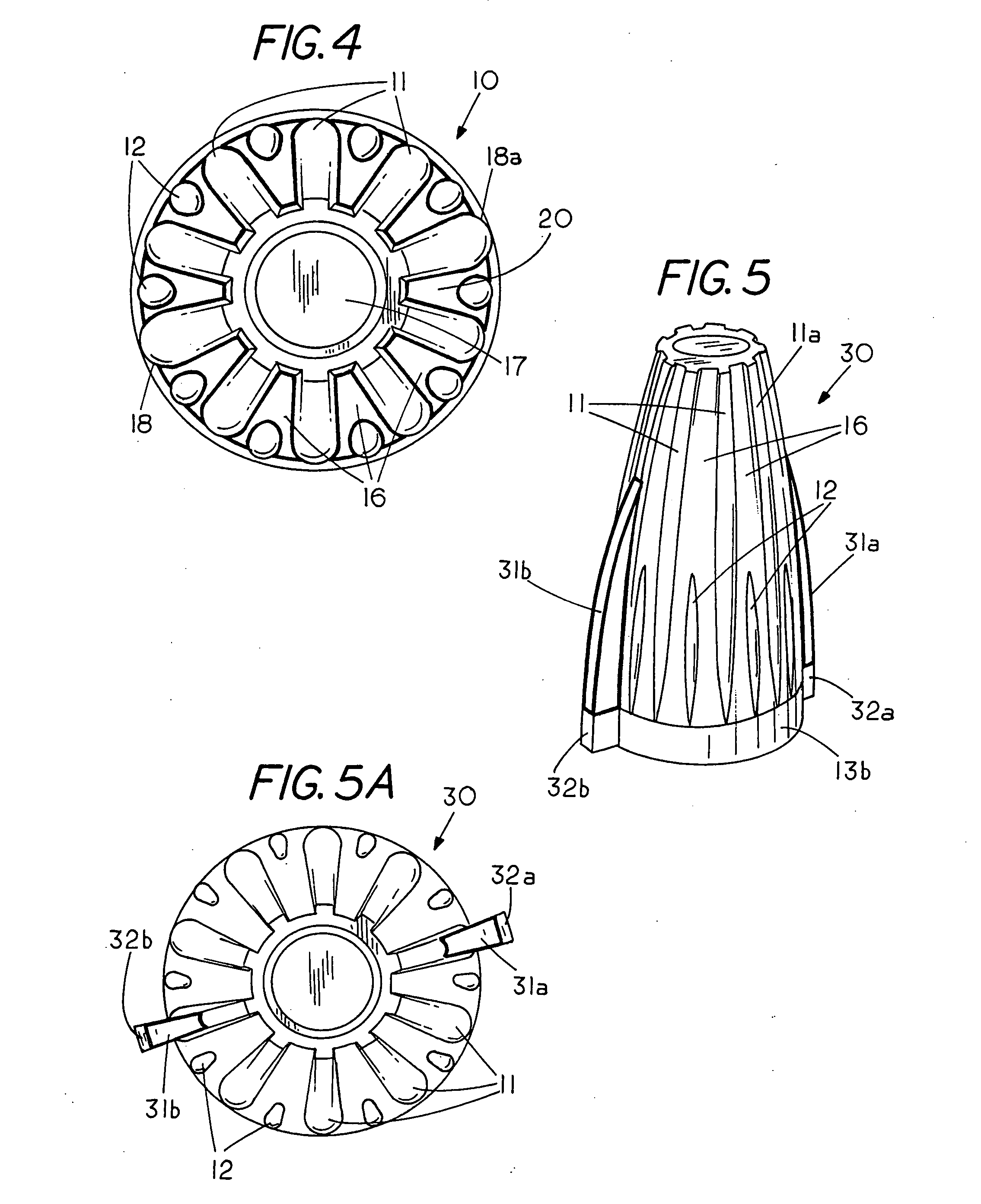As wiring tasks often require usage of multiple twist-on wire connectors the users hands and fingers can become fatigued from having to repeatedly apply sufficient torque to the twist-on wire connectors to form the wire ends into electrical contact with each other while ensuring that the exposed ends of the electrical wire are covered with either insulation or the twist-on wire connector.
However, because of the small size of the twist-on wire connectors as well as the need to be able to transmit both compressive and tangential forces to the wire connector it is difficult to develop a twist-on wire connector that remains both effective in forming the
electrical connection as well as comfortable to use over an extended period of time while at the same time inhibiting or avoiding fatiguing and injuring the users fingers.
Blaha points out the problem of installing twist-on wire connectors with a hard shell is that if numerous connections are made the hard plastic surface can be painful on the fingers or in certain instances the shell surface can be slippery due to the sweat or soil on the users hand.
While Blaha recognizes that the placement of a cushion on the grip mounting portion of the twist-on wire connector may reduce fatigue Blaha does not recognize that not everyone grasps the twist-on wire connectors in the same manner or that because of cramped conditions it might not be possible to grasp the twist-on wire connector on the grip mounting portions to enable the user to benefit from the cushioned grip of Blaha.
Consequently, while the Blaha twist-on wire connector has a cushioned grip it can be of little benefit to those users who do not grip the twist-on wire connector on the normal designated gripping portions or those users who might have to apply a twist-on wire connector in a location with inadequate space to position the users hand or fingers around the normal hand gripping regions of the twist-on wire connector.
Thus, when application conditions are the most difficult one not only does one not have the benefit of cushioned grip for the users fingers but one has to generate greater hand force on the twist-on wire connector to obtain the necessary torque to bring the wire connector into engagement with the electrical wires therein.
However, Krup fails to teach that the vinyl shell located around his rigid cage comprises a cushioned surface.
Unfortunately, tightly shrinking the material around the body of connector introduces a circumferential bias or tension force in the heat shrunk material thus rendering material which may even be soft into a covering that is hard to the touch and is reluctant to yield to finger torque.
Thus the heat shrunken tube on the body of his wire connector produces an external surface that resists resilient displacement and is also hard and is uncomfortable in response to the finger and
hand pressure of the user since the tension and bias forces introduced by the heat shrinking limit the yielding of his material.
The effect is to form an
elastomer material into a hard cover or non-resilient cover on a hard shell since a heat shrunk cover is limited in its ability to absorb external
finger pressure.
Unfortunately, whether a twist-on wire connector is finger friendly and inhibits finger fatigue is a function of a number of variables including how and where the user grasps the twist-on connector as well as subjective factors on how the twist-on wire connector feels as it is handled or when it is secured to a wire or wires within the twist-on wire connector.
 Login to View More
Login to View More  Login to View More
Login to View More 


